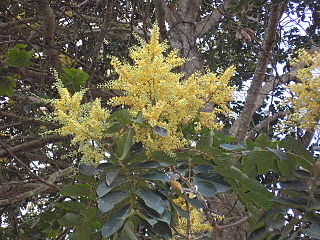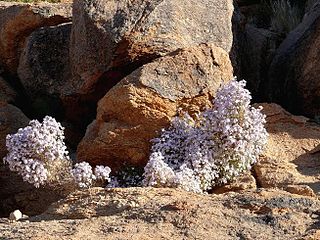
The Lamiaceae or Labiatae are a family of flowering plants commonly known as the mint, deadnettle or sage family. Many of the plants are aromatic in all parts and include widely used culinary herbs like basil, mint, rosemary, sage, savory, marjoram, oregano, hyssop, thyme, lavender, and perilla, as well as other medicinal herbs such as catnip, salvia, bee balm, wild dagga, and oriental motherwort. Some species are shrubs, trees, or, rarely, vines. Many members of the family are widely cultivated, not only for their aromatic qualities, but also their ease of cultivation, since they are readily propagated by stem cuttings. Besides those grown for their edible leaves, some are grown for decorative foliage. Others are grown for seed, such as Salvia hispanica (chia), or for their edible tubers, such as Plectranthus edulis, Plectranthus esculentus, Plectranthus rotundifolius, and Stachys affinis. Many are also grown ornamentally, notably coleus, Plectranthus, and many Salvia species and hybrids.

The Gnaphalieae are a tribe of flowering plants in the family Asteraceae. It is most closely related to the tribes Anthemideae, Astereae, and Calenduleae.

Banksia ser. Cyrtostylis is a taxonomic series within the plant genus Banksia. First published at sectional rank by George Bentham in 1870, it was demoted to a series by Alex George in 1981. The name has had three circumscriptions.

Tachigali is a flowering plant genus in the legume family (Fabaceae). It includes 74 species of trees native to the tropical Americas, ranging from Nicaragua to Bolivia, Paraguay, and southern Brazil. Typical habitats include tropical rain forest, lower montane forest, seasonally-flooded and non-flooded evergreen lowland forest and woodland, gallery and riparian forest, sometimes on white sands, cerrado and other dry woodland, and rocky grassland.

Cotula is a genus of flowering plant in the sunflower family. It includes plants known generally as water buttons or buttonweeds.

Diascia is a genus of around 70 species of herbaceous annual and perennial flowering plants of the family Scrophulariaceae, native to southern Africa, including South Africa, Lesotho and neighbouring areas.

Hesperantha is a genus of cormous flowering plants in the family Iridaceae. The genus name is derived from the Greek words hesperos, meaning "evening", and anthos, meaning "flower".

Pauridia is a flowering plant genus in the family Hypoxidaceae. It is native to southern Africa, and southern Australia. It has been introduced into New Zealand. The southern African species have been transferred from the genus Spiloxene.

Chironia is a genus of flowering plants in the family Gentianaceae, native to southern Africa. It is named after Chiron, the centaur known for his use of medicinal plants, as number of Chironia species are used in traditional medicines.

Jamesbrittenia is a genus of flowering plants in the family Scrophulariaceae, disjunctly distributed in southern Africa, Sudan and Egypt, and India and Bangladesh. Subshrubs with profuse flowering, they are amenable to containers, so a number of cultivars and hybrid cultivars have been developed for the garden trade.
Chaenostoma is a genus of flowering plants belonging to the family Scrophulariaceae.

Manulea is a genus of flowering plants belonging to the family Scrophulariaceae.
Diclis is a genus of flowering plants belonging to the family Scrophulariaceae.
Phyllopodium is a genus of flowering plants belonging to the family Scrophulariaceae.











